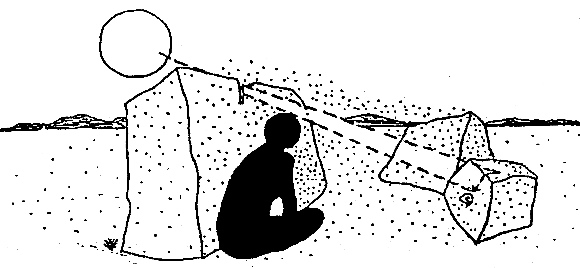|
Solar Calendar – We owe Our Notion of Time to the Sun
A solar calendar is a calendar whose dates indicate the position of the earth on its revolution around the sun and is based on the seasonal year of approximately 365 1/4 days, the time it takes the Earth to revolve once around the Sun. The other popular alternative is the lunar calendar (favored by the Chinese), which is based on the rotation of the moon around the earth. I think it fair to say that our concept of time however, is primarily based on the relationship of the earth and the sun and currently is one the four pillars on which science is built (space, time, energy and matter). Extrapolating this thought you could say that the concept of time is just one of the many benefits the sun provided to us … as it helped our minds to grow. Even today the concept of time is leading into new and exciting areas of research. 
The Egyptians appear to have been the first to develop a solar calendar, using as a fixed point the annual sunrise reappearance of the Dog Star — Sirius, or Sothis — in the eastern sky, which coincided with the annual flooding of the Nile River. They constructed a calendar of 365 days, consisting of 12 months of 30 days each, with 5 days added at the year’s end. The Egyptians’ failure to account for the extra fraction of a day, however, caused their calendar to drift gradually into error. Ptolemy III Euergetes of Egypt, in the Decree of Canopus (237 B.C.), introduced an extra day every four years to the basic 365-day calendar (this practice also having been introduced in the Seleucid calendar adopted in 312 B.C.). In the Roman Republic, Julius Caesar in 45 B.C. replaced the confused Roman republican calendar, which probably was based on the lunar calendar of the Greeks, with the Julian calendar. The Julian calendar assigned 30 or 31 days to 11 months but fewer to February; it allowed for a leap year every four years. The Julian calendar, however, made the solar year slightly too long by adding a full quarter of a day annually—the solar year actually runs 365.2422 days. By mid-16th century the extra time had resulted in an accumulated error of about 10 days. To correct this error, Pope Gregory XIII instituted the Gregorian calendar in 1582, dropping October 5–14 that year and omitting leap years when they fell on centurial years not divisible by 400—e.g., 1700, 1800, 1900.
If the position of the earth in its orbit around the sun is reckoned with respect to the equinox, the point at which the orbit crosses the celestial equator, then its dates accurately indicate the seasons, that is, they are synchronized with the declination of the sun. Such a calendar is called a tropical solar calendar. The duration of the mean calendar year of such a calendar approximates some form of the tropical year, usually either the mean tropical year or the vernal equinox year. The following are tropical solar calendars: _ Gregorian calendar Every one of these calendars has a year of 365 days, which is occasionally extended by adding an extra day to form a leap year, a method called "intercalation", the inserted day being "intercalary". The Zoroastrian calendar is a religious calendar used by adherents of the Zoroastrian faith, and is an approximation of the tropical solar calendar.
Here are two websites where you can convert dates into those of other calendar systems: Western-Chinese Calendar Converter Back from this page on Solar Calendars to Sun Information
|


